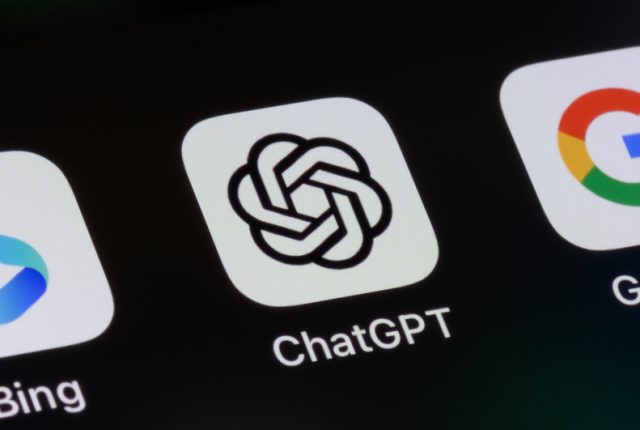The potential impact of OpenAI’s GPT-4o on the drinks industry
Tech firm OpenAI has launched the latest version of GPT-4, which powers its signature software ChatGPT. db looks at how it could impact the drinks industry.

So, what could this latest iteration on the steady, but rapidly increasing, speed of the AI journey mean for the drinks sector? Below are some suggestions of how the newest addition reveals the potential future direction for the beverage industry.
Free at the point of use
Firstly, when launching the product on Tuesday, chief technology officer at the California-based firm, Mira Murati, announced its new ChatGPT model will be free for all to use.
In itself this is a big shift, as previously OpenAI had looked to monetise improvements at source. But it also stated the advanced interaction capabilities of the engine would only initially be available to users on its paid ‘Plus’ subscription service. So, in essence, it is splitting its winnings on this front. But the top line is that everyone will be able to take advantage of the most advanced form of its service. This is a significant shift.
OpenAI also said the new flagship model can “reason across audio, vision, and text in real time” with the ‘o’ standing for ‘omni’. It added that it would “accept any combination of text, audio, and image, and generates any combination of text, audio, and image outputs”.
Human approach
This ‘multi-media’ approach, moving it away from a simple ‘chatbot’ model, also positions the technology into a ‘human’ or, as some analysts have already described it, ’emotive’ space. As previously reported, the system is already highly capable, and was able to easily pass the Court of Master Sommelier exams, scoring between 77-92% on a variety of tests —albeit not the practical exams…yet.
Now, the interactive system responds to audio inputs in “as little as 232 milliseconds”. This is particularly note-worthy, as it is aiming to be similar to a normal human response time. At present, AI has felt more remote, and computer-centric. By reducing the technological burden, and introducing complex, voice-led commands, this is definitely AI 2.0.
So what specific factors and elements play a role for the drinks trade’s use of the burgeoning technology?
1. Wine and drinks education
Since the pandemic, when a large number of drinks educators moved their learning online, the promise of digital education shifted from a possibility to a distinct reality. But the majority of these platforms are still fairly basic, relying on a combination of text, imagery and some video as well as webinar and live chat functions.
But GPT-4o reveals how this could be exploded in the near future. A video illustrates how the tech ‘teaches’ a child how to solve a simple maths problem on an iPad.
Math problems with GPT-4o and @khanacademy pic.twitter.com/RfKaYx5pTJ
— OpenAI (@OpenAI) May 13, 2024
In the future, perhaps this could be applied to all manner of drinks education, from viticulture and in the vineyard, to production processes, to the classroom. What is particularly impressive in the video is the point-by-point ‘pedagogic’ approach to learning that ChatGPT presents.
This approach is a marked change to the simple data dump of information that users could expect in previous iterations of AI and ChatGPT. Instead, it offers a more ‘human’ and ‘teacherly’ interaction. In this context, imagine asking about ‘how to decant’ and a digital voice taking someone through each stage. Or ‘what is the best way to store wine’, and, again, a step-by-step guide, with questions and answers about your environment, home, and storage capabilities.
In addition, it could be game-changing for food education and cooking, especially when considered in an augmented reality setting.
2. Tastings
The wine world is truly global. Of course, the large number of tastings, whether virtual or in-person, are delivered in the language of the host nation. But for an international audience, this can obviously be tricky and make some events inaccessible beyond the immediate national or regional customer base — or, of course, those are multi-lingual.
Of course nothing still beats direct, human translation at an event. But OpenAI is aiming provide the option of translation delivered at a similar speed to traditional human interaction. Often, the pace of moving from glass to glass can make translation tricky, as well as the complications of the lexicon of tasting notes, and the general idiosyncrasy of each instructor’s approach. In this way, the speed of AI translation, and its ability to be ‘trained’ on an instructor’s own approach to language, could offer a useful tool to a class of international students.
Indeed, translation tools online have existed for years, such as Google Translate, but OpenAI has taken it to the next level simply on a speed and ease of use basis. The demo video of the instant translation is impressive, and if that translates (excuse the pun) into a real-life example, this could become the ‘go-to’ tool.
Partner Content
Live audience request for GPT-4o realtime translation pic.twitter.com/VSj5phFKM6
— OpenAI (@OpenAI) May 13, 2024
When you also consider it being applied into augmented reality tools such as Apple’s VisionPro, the potential for application in real-world scenarios, such as wine tastings or other forms of education, is clear to see.
3. Drinks information
One of the biggest concerns, but also biggest opportunities, from AI is how it can deliver information to the user. For example, wine and drinks labels.
The vision capabilities of the new version of GPT do look still in their infancy, as shown by the live demo. In this case, the software thought a man’s face was a wooden board.
But as with all AI learning, the potential is there, and the pathway is clearing. Once a clear instruction was given, it was able to clearly read the ’emotion’ like smiling. And, of course, this is quite a complex task, whereas simply looking at a bottle and interpreting the information is considerably more straightforward.
Live audience request for GPT-4o vision capabilities pic.twitter.com/FPRXpZ2I9N
— OpenAI (@OpenAI) May 13, 2024
Eventually, this will mean that a consumer will be able to approach a wine label or any drink — or food products — and all the relevant information will be downloaded and delivered to the user, instantly. Again, the potential for augmented reality is also present here.
One day soon we will be able to walk into a retailer and find out all the details of a drink, from where it is produced, its sustainability, its ingredients and any other information, just through looking directly at it.
We are not quite at the destination yet, but as this latest release has shown, AI is rapidly progressing. It remains to be seen exactly what role it will play for the drinks trade, and how quickly it will be utilised.
But it will be significant. And it will happen.
Related news
Will the Apple Vision Pro change the drinks industry forever?
How AI could help you choose a new favourite wine
Absolut Vodka seeks to end AI bias
Friend or foe: how will AI shape the future of drinks?
Related news
Strong peak trading to boost Naked Wines' year profitability




